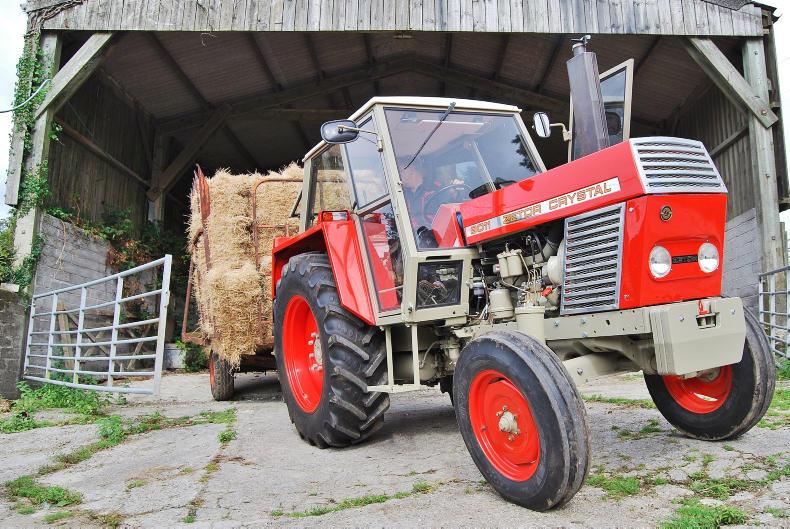The 1969 Zetor Crystal 8011 played a crucial role in the design of the modern farm tractor, yet its significance in tractor development is frequently overlooked.
Not so long ago, farmers throughout Ireland and the UK would have relied on affordable tractors such as the Czech-built Zetor Crystal 8011, to work in conditions where domestic British-built models of a similar size and power, wouldn’t have dared to tread.
Zetor’s world headquarters are located at Brno, in the Czech Republic, (formerly Czechoslovakia). Zbrojovka Brno was originally a firearms manufacturer – the company famously designed the Bren (Brno-Enfield) machine gun used by the British Army in World War II.
The name Zetor, which first appeared on the twin-cylinder diesel Zetor 25 in 1946, is today synonymous throughout Europe for simple, reliable, rugged tractors with the ability to do almost anything, and go anywhere.
In truth, the archetypical Zetor tractor hasn’t always enjoyed the refinement of a British or German-built machine. Yet it’s a little known fact that the pioneering Zetor Crystal 8011, played a crucial role in the design of the modern farm tractors we use today.
Developed between 1964 and 1968, the Crystal was an all-new high-horsepower platform, designated Unified Range Two (UR-II). This would form the basis for a new groundbreaking tractor design, many features from which are today incorporated into modern-design technologies that we now take for granted.
At the time of its launch in 1969, the Zetor Crystal 8011 was the world’s first conventional tractor to feature an integrally designed, isolation rubber-mounted flat-deck cab.

Back when manufacturers such as Ford, Massey Ferguson and David Brown were offering cloth-covered weather-cabs, the Crystal introduced the world to a fully-glazed safety-cab.
The new cab, cleverly separated the bonnet from the cab structure to eliminate the in-flux of heat-wash from the engine and transmission. This design enabled Zetor to fit the largest one-piece windscreen seen in any tractor built at the time.

The new Crystal was equipped with an electric windscreen wiper, a demister/blower, a fully-adjustable air suspension seat, and an integrated passenger seat. It would later become available with factory-fitted four-wheel drive and, in 1972, officially become the world’s first Q-cab tractor, with an in-cab noise rating of just 85DBa.
The Crystal was also equipped with power-assisted steering, and a 16F/8R gearbox with a two-speed change-on-the-move ratio splitter that provided full engine-braking. It offered optional independent front-wheel suspension with front-wheel fenders, a two-speed PTO, lower-link draft sensing, an exhaust-aspirated dry-element air filter and it came from the factory with an air compressor and trailer air-braking fitted as standard.

What isn’t as well-known, is that the Polish-built Ursus C-385, was virtually a carbon-copy of the Zetor Crystal 8011, built in accordance with policies implemented during the Communist regime in eastern Europe. Ursus in Poland had produced Zetor tractors since 1962, as part of the Mutual Development Centre for Tractor Production.
The Crystal 8011 was one of many tractors produced by Ursus under its own name, which manufactured rear axles and hydraulic systems for the Crystal range. The remainder of the components for both tractor factories were produced by Zetor at Brno.

More than 44,000 Zetor Crystals, including later six-cylinder derivatives, were built at Zetor’s Brno factory, before production was transferred to ZTS at Martin, Slovakia, in 1981. In 1987, the range was restyled and a new synchromesh gearbox introduced. Production of all UR-II tractors ceased in 2002.

Under the Hood: From Crops and Cultivation to Canada and Crystal






 This is a subscriber-only article
This is a subscriber-only article















SHARING OPTIONS: